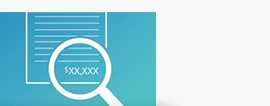Prior to the coronavirus outbreak, the US economy was doing quite well. The unemployment rate was near record lows. Housing values nationwide were climbing, as was the stock market.
Despite these favorable economic conditions, Americans continued to take on debt. According to the Federal Reserve, aggregate household debt totaled more than $14 trillion as of March 31, 2020. This amount exceeds the prior peak, which occurred in the third quarter of 2008. Because there is a short delay in reporting individual credit figures, The Federal Reserve cautions that these figures do not fully reflect the impact of the COVID-19 shutdown that began during the last two weeks of March.
There is economic uncertainty ahead, so people must analyze their finances and work to strengthen their situation. Getting out of debt must become a high priority.
There are different approaches to dig out of debt. The best method for you depends on your individual circumstances. Start by listing the outstanding balance for each debt, the minimum payment due, and the available credit line. For each outstanding debt, you must pay the minimum balance due every month. To achieve your goal of digging out of debt, you must find additional cash every month – by cutting back on day-to-day expenses or finding ways to earn extra income – and apply that cash toward your debts. The main difference between these approaches is the order in which you tackle your various debts.
Start with the Smallest Debt Balance
Some recommend that you focus first on the smallest outstanding balance (Debt A). After paying the minimum balance due on each of your debts, apply any extra money to Debt A until it’s paid off.
Once that debt has been paid off, continue to pay the minimums on each debt outstanding and apply the minimum balance from the debt you just paid off (Debt A) and any extra cash toward paying off the next smallest debt (Debt B). Once you have paid off Debt B, you can apply the minimum payment amount from Debt A, Debt B, and any extra cash to the next smallest balance, or Debt C.
This approach is called the debt snowball method. Each debt you pay off frees up more money to apply to the next smallest debt on the list. Like a snowball rolling down a hill, you are gaining momentum as you reduce your overall indebtedness. You will also feel less overwhelmed as the number of debts you have declines.
Focus on the Highest Interest Rate Debt
With this approach, you will apply any extra cash to the debt with the highest interest rate (Debt 1) rather than the smallest balance (Debt A). Once you pay off the debt with the highest interest rate (Debt 1), you pay the minimums on all debts and apply the minimum from the debt you have paid off (Debt 1) and any extra cash to the debt with the next highest interest rate (Debt 2). Once you pay off Debt 2, you can apply the minimums from Debt 1, Debt 2, and any extra cash to the next highest rate debt, or Debt 3. The key advantage of this method, called the debt avalanche, is that it will reduce the amount of interest you pay over time since you are knocking off the higher rate debts first.
Consider Your Credit Score
The most important factor determining your credit score is paying your bills on time. Not all debts are equal, however. From the credit bureaus’ perspective and your financial well-being, you should differentiate between “good debt” and “bad debt” when deciding where to apply extra cash. “Good debt” includes mortgages and student loans, and “bad debt” is often associated with lifestyle choices – credit card debt and auto loans – which can cause problems, especially if you live beyond your means. Credit card debts have higher interest rates, so there is also an economic incentive to tackle those first. As you determine where to start, you should consider utilization, or how much you have borrowed relative to the total available credit line on a particular credit card. Having a balance outstanding equal to more than 30 percent of your credit limit hurts your credit score.
No matter which approach you choose to dig out of debt, the key is to map out a strategy – a strategy that makes sense for you. To manage your financial life, you must be honest about your situation and commit to a plan. In doing so, you are making your future and financial well-being a priority.
If you want to learn more about how to dig out of debt and get started managing your financial life, see our collection of Analyze Finances posts.



